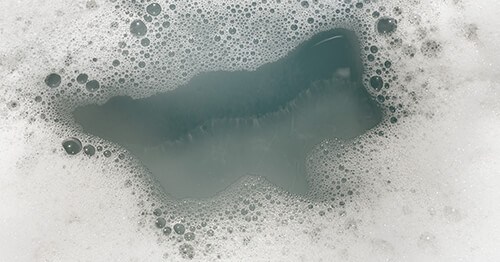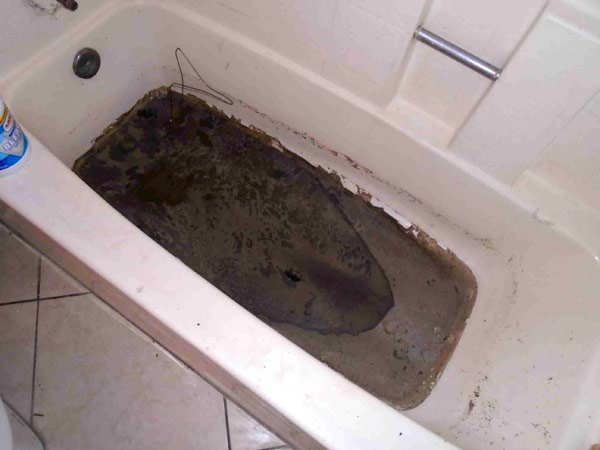Top Reasons Behind Sewage Backflow in the Bathtub
Top Reasons Behind Sewage Backflow in the Bathtub
Blog Article
We've noticed this great article relating to Why is Sewage Backing Up Into My Bathtub? listed below on the internet and think it made sense to share it with you on this page.

Sewer back-up in the tub can be an upsetting and unhygienic trouble for any kind of homeowner. Not just is it troublesome, but it also postures major health and wellness risks and shows underlying concerns with the plumbing system. Recognizing why sewage is showing up via the bath tub is important for taking appropriate activity to resolve the issue successfully.
Intro to the Issue
Typical Reasons for Sewage Backup
Blockages in the Sewer Line
One of the most usual sources of sewer backup is a blockage in the drain line. This can occur due to the build-up of debris, oil, or international things in the pipes, preventing proper circulation and creating sewer to support right into your bath tub.
Tree Origin Intrusion
Tree roots seeking wetness and nutrients can infiltrate drain lines via small fractures or joints. With time, these roots can grow and increase, triggering considerable damage to the pipes and bring about sewage back-up issues.
Recognizing the Problem
When sewer starts backing up into the tub, it's a clear indicator of an issue with the water drainage system. The wastewater that needs to be moving away from your home is instead locating its back into your home, which can bring about significant damages and carcinogen.
Possible Reasons
Numerous aspects can contribute to sewer backup in the bathtub. From obstructions in the sewage system line to problems with the plumbing facilities, determining the source is crucial for finding a service.
Aging Framework
Older homes might have dated plumbing systems that are a lot more at risk to rust, cracks, and damage. As pipes age, they become a lot more susceptible to leakages and blockages, increasing the probability of sewage back-up events.
Heavy Rainfall or Flooding
During durations of heavy rainfall or flooding, the sewer system might become overwhelmed with excess water, causing backups and overflows. This can cause sewer backing up into tubs and other fixtures inside the home.
Indicators of Sewage Back-up
Foul Odors
Unpleasant odors originating from drains or fixtures, particularly in the shower room, might suggest sewage backup problems. These smells are frequently solid and consistent, indicating an issue that calls for prompt attention.
Slow Draining Fixtures
Tubs, sinks, and bathrooms that drain pipes gradually or otherwise in any way could be experiencing sewage backup. If multiple fixtures are affected at the same time, it's likely that the issue stems from a common factor, such as the main sewer line.
Gurgling Sounds
Strange gurgling or gurgling sounds coming from drains when water is running somewhere else in the house are a sign of air caught in the plumbing system. This air build-up can result from sewer backup and must be explored without delay.
Health Threats Associated with Sewer Backup
Contamination of Water
Sewage back-up can contaminate the water system in your house, positioning a severe wellness danger to you and your family. Direct exposure to polluted water can cause intestinal issues, skin infections, and other health problems.
Mold and mildew Development
Wetness from sewer back-up can produce perfect problems for mold and mildew growth in your home. Mold and mildew spores can exacerbate respiratory troubles and create allergic reactions in delicate people, making prompt cleaning crucial.
Spread of Disease
Sewage consists of hazardous germs, viruses, and bloodsuckers that can trigger a variety of illness, including liver disease, cholera, and gastroenteritis. Coming into contact with sewer or contaminated surfaces puts you at risk of infection.
Cleaning Up After Sewer Back-up
Sanitation Procedures
Thoroughly decontaminate and disinfect affected areas after sewage back-up to eliminate damaging microorganisms and avoid mold and mildew growth. Usage ideal cleansing products and protective equipment to make certain safe and efficient clean-up.
Reconstruction of Affected Areas
Fix any damages to flooring, wall surfaces, or fixtures triggered by sewage backup. Depending on the degree of the damage, you may need to replace carpets, drywall, or various other products to restore your home to its pre-loss condition.
Immediate Actions to Take
Switching Off Supply Of Water
In the event of sewage backup, it's essential to switch off the supply of water to stop additional contamination and damages. Situate the main water shutoff valve in your home and closed it off until the concern can be resolved.
Contacting a Professional Plumber
Handling sewage back-up is not a do it yourself work. Get in touch with an accredited plumber with experience in handling sewage-related issues to analyze the circumstance and do needed fixings or cleanups.
Staying Clear Of Contact with Contaminated Water
Up until the sewer back-up is fixed, avoid contact with polluted water to prevent the spread of germs and virus. Use safety gear if you need to be in the afflicted location and clean your hands completely afterward.
Safety nets
Normal Maintenance of Sewer Lines
Arrange routine assessments and upkeep of your sewer lines to recognize and attend to possible problems prior to they intensify right into major troubles. This can consist of cleaning out particles, checking for tree root breach, and repairing any type of damaged pipelines.
Setting Up Bayou Valves
Think about setting up bayou shutoffs in your plumbing system to stop sewage from flowing back into your home during durations of heavy rainfall or flooding. These shutoffs automatically close when water draws back up, securing your home from contamination.
Appropriate Disposal of House Waste
Avoid flushing anything besides bathroom tissue and human waste down the toilet to prevent clogs and clogs in the sewage system line. Dispose of grease, oil, and other home chemicals appropriately to decrease the danger of plumbing problems.
Why Is Water Backing Up in My Bathtub When I Flush My Toilet?
What to do about a sewer line clog
First, don’t bother with plunging. No amount of plunging will dislodge the clog in a sewer line. The clog is too far away. Plungers are for clogs in the toilet itself, not the sewer line. Plus, the most likely causes of a sewer clog are:
Tree roots Flushed toys or feminine products Grease buildup Those items don’t move easily. And in the case of tree roots, the roots need to be cut out of the pipe and the pipe will need to be repaired.
You’ll need a closet auger. A closet auger is a type of plumber’s snake with a protective cover to keep from scratching the delicate porcelain toilet. If the clog is further down, you may need to remove the toilet or use one of your cleanouts to get to the clog.
We also recommend doing a video inspection of the drain to ensure that the cause of the clog has been completely removed. Otherwise, you could have the same problem again in a few days or weeks.
https://mspplumbingheatingair.com/blog/why-is-water-backing-up-in-my-bathtub-when-i-flush-my-toilet

I stumbled upon that piece about Why sewage is coming up through your bathtub when doing a lookup on the search engines. Please take a moment to share this content if you enjoyed it. I praise you for your time. Kindly check up our blog back soon.
Visit Our Website
Report this page